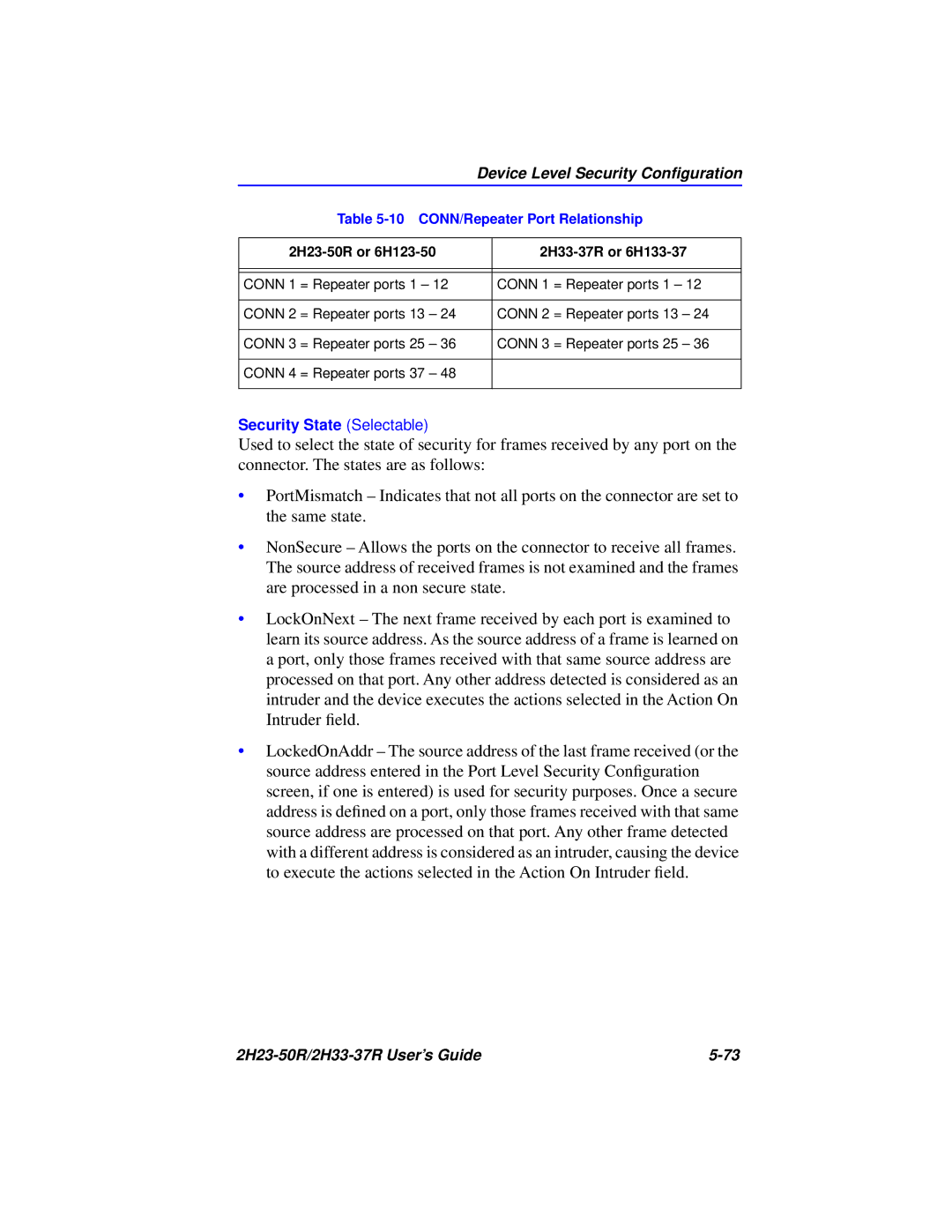Device Level Security Configuration
Table 5-10 CONN/Repeater Port Relationship
| |||
|
|
|
|
|
|
|
|
CONN 1 | = Repeater ports 1 – 12 | CONN 1 | = Repeater ports 1 – 12 |
|
|
|
|
CONN 2 | = Repeater ports 13 – 24 | CONN 2 | = Repeater ports 13 – 24 |
|
|
|
|
CONN 3 | = Repeater ports 25 – 36 | CONN 3 | = Repeater ports 25 – 36 |
|
|
|
|
CONN 4 | = Repeater ports 37 – 48 |
|
|
|
|
|
|
Security State (Selectable)
Used to select the state of security for frames received by any port on the connector. The states are as follows:
•PortMismatch – Indicates that not all ports on the connector are set to the same state.
•NonSecure – Allows the ports on the connector to receive all frames. The source address of received frames is not examined and the frames are processed in a non secure state.
•LockOnNext – The next frame received by each port is examined to learn its source address. As the source address of a frame is learned on a port, only those frames received with that same source address are processed on that port. Any other address detected is considered as an intruder and the device executes the actions selected in the Action On Intruder field.
•LockedOnAddr – The source address of the last frame received (or the source address entered in the Port Level Security Configuration screen, if one is entered) is used for security purposes. Once a secure address is defined on a port, only those frames received with that same source address are processed on that port. Any other frame detected with a different address is considered as an intruder, causing the device to execute the actions selected in the Action On Intruder field.
|
